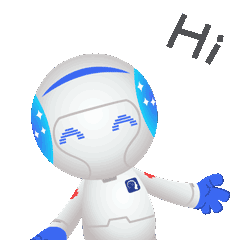Tele-surgery is an emerging surgical approach that relies on remote communication technology and surgical robotic system, representing a significant direction for the advancement of the field of surgery [1]. The rise of tele-surgery is attributed to the maturity and progress of surgical robotic system. Surgeons can perform most surgical procedures by manipulating robotic arms from their control consoles, even from a distance of tens of meters, which can be seen as a preliminary form of "remote operation" and serves as the foundation for the development of tele-surgery [2]. With rapid advancements in science and technology, human activities are expanding, making endeavors such as lunar base construction and interstellar travel [3, 4] possible. Furthermore, scenarios involving disaster relief and battlefield emergency care, which are considered dangerous environments, hold potential for tele-surgical applications.
As the core of remote medical care, tele-surgery has gained high attention from the U.S. Department of Defense and the National Aeronautics and Space Administration (NASA). The latter has provided continuous and stable funding, nurturing the early stages of tele-surgery [5, 6]. The United States has successively developed the da Vinci Surgical System [9], following the creation of the AESOP System [7] and the Zeus Surgical System [8]. In 2001, the Zeus System was utilized to successfully perform the world's first transatlantic surgery, known as the Lindbergh Procedure [10]. However, due to various reasons, the development of tele-surgery has progressed relatively slowly over the past decade.
China's vast territory spans approximately 5,200 kilometers across five time zones from east to west and approximately 5,500 kilometers from north to south. Regional development is uneven, and high-quality medical resources are excessively concentrated in first-tier and provincial capital cities. Tele-surgery offers a candidate solution to address the issue of regional imbalances. In recent years, China has made remarkable achievements in the development of domestically produced surgical robots, which has propelled the rapid progress of tele-surgery. Currently, China has advanced to the forefront of tele-surgery development. The country has successfully established remote surgical systems based on various communication modes, including 5G, dedicated lines, and 5G+dedicated lines. Noteworthy accomplishments have been achieved in areas such as data latency processing strategies, surgical information transmission encryption, and robotic adaptability enhancement. Several small-scale clinical trials have been completed, laying a preliminary foundation for the application and promotion of tele-surgery [11, 12, 13]. The next 20 years will be a golden opportunity for the global development of tele-surgery. Nevertheless, it will also face multiple challenges. I firmly believe that Chinese surgeons will overcome various difficulties and pave the way for the high-quality development of tele-surgery.
Opportunities for the Development of Tele-surgery
Currently, Chinese-developed surgical robots [14] and telecommunication technology [15] are flourishing, with increasingly comprehensive technical systems. Disciplines such as artificial intelligence [16] and automation [17, 18] have seen a continuous enhancement of their core competencies, providing the basic conditions for the establishment of a tele-surgical system. Meanwhile, China faces various factors, including uneven distribution of medical resources and an aging population [19]. Tele-medicine, represented by tele-surgery, is set to become a potent complement to traditional healthcare and is currently in an important period of development opportunities.
The government provides robust support and policy regulations for tele-surgery. In October 2020, the Ministry of Industry and Information Technology and the National Health Commission jointly issued a notice on strengthening the construction of tele-medical network capabilities. It encouraged medical equipment manufacturers to develop and adapt to the 5G network standard, thereby enhancing the 5G access capability of professional equipment. In July 2021, ten departments, including the Ministry of Industry and Information Technology, issued the "5G Application Sailing Action Plan (2021-2023)," which encouraged the research and development of products such as 5G medical robots, 5G ambulances, 5G medical access gateways, and intelligent medical equipment. In December 2021, the Ministry of Industry and Information Technology, the National Health Commission, the National Development and Reform Commission, and other ten departments jointly issued the "14th Five-Year Plan for the Development of the Medical Equipment Industry," which encouraged the integration of 5G modules into the medical equipment industry, embedding new technologies such as artificial intelligence, industrial internet, and cloud computing. This initiative aimed to promote the intelligent, precise, and networked development of medical equipment. In January 2023, the Ministry of Industry and Information Technology, the National Health Commission, and seventeen other departments jointly issued the "Implementation Plan for the Application of 'Robot+'", which included the application of 5G tele-surgery in the field of medical health. Additionally, in April of the same year, the Research Working Group on Next-generation Wireless Diagnostic and Therapeutic Applications, led by the China Academy of Information and Communications Technology, published the "Research Report on Remote Medical Equipment," which provided preliminary definitions and exploratory guidelines for remote treatment-related medical device networking requirements.
The mature and comprehensive theoretical and technical system of surgical procedures serves as the most crucial foundation for the innovative development of tele-surgery. Without the disciplinary advantages of surgery, tele-surgery cannot be safely conducted, let alone progress. Chinese surgical science has consistently remained at the forefront internationally, with surgical technology innovation and accumulated experience in surgical procedures leading the way globally. Take urology as an example: our team has established a comprehensive system of laparoscopic techniques in urology, introducing over 20 novel surgical procedures. These techniques have become standardized practices in urological surgery, both domestically and abroad, and have been incorporated into numerous authoritative textbooks. Moreover, various surgical specialties such as hepatobiliary surgery, orthopedics, neurosurgery, and thoracic-cardiovascular surgery have achieved significant advancements in surgical techniques and the construction of theoretical frameworks [12, 20, 21, 22, 23]. These achievements have laid a solid foundation for the development of tele-surgical procedures in related disciplines and are indeed the "game-changers" for the advancement of tele-surgery in our country.
Throughout the history of surgical science, each leap forward was intertwined with the development of basic scientific and technological disciplines. The development of surgical science is the result of interdisciplinary integration, and higher stages of surgical science require even greater emphasis on the integration of multiple disciplines. The maturity of telecommunication and domestically produced surgical robots has made the development and widespread application of tele-surgery possible. Telecommunication technology has evolved from wired communication methods such as manual telegraphs, Morse code telecommunication, and fax communication, to wireless communication methods such as radio, mobile phones, and satellite communication. In recent years, the popularization of 5G technology has revolutionized our understanding of communication technology [24, 25, 26]. The continuous iteration of communication technology has significantly improved stability and efficiency while greatly reducing costs. Additionally, satellite communication, exemplified by projects like Starlink, is gradually maturing, with the expectation of achieving ultra-long-distance latency within 100 milliseconds. China has also initiated low-orbit satellite projects, such as the Hongyan Global Satellite Constellation Communication System and the Hongyun project. In the future, these endeavors hold promise for achieving global coverage without blind spots [27], further expanding the implementation scope of tele-surgery and reducing costs and complexities.
Surgical robots have been in existence for over 30 years since their invention. Although China started relatively late, it has experienced rapid development in this field. In recent years, numerous companies specializing in surgical robots have emerged, covering various types of robots, including single-port, multi-port, and natural orifice robots. These advancements have provided substantial support for the development of teleoperated surgical robots with complete independent intellectual property rights. Furthermore, future technologies such as artificial intelligence, the Internet of Things, supercomputers, and virtual reality can all contribute to the development of tele-surgery, offering enhanced safety measures and a more immersive surgical experience.
Challenges in the Development of Tele-surgery
(1) Need for Improved Supporting Regulations
Tele-surgery is at an early stage of exploration and gradually transitioning to clinical applications. The government has issued a series of guidelines and supportive policies, but they mainly focus on tele-surgery research itself. There is still a lack of professional guidance on issues such as responsibility attribution and supporting legal regulations [28].
Tele-surgery differs from traditional surgery as it involves the remote control terminal operated by the lead surgeon, the remote communication system, and the patient-side robotic arm. It requires the involvement of various parties, including the lead surgeon, the hospital where the patient is located, the robot manufacturer, the network service provider, and the healthcare bureaus in both locations. Tele-surgery involves multiple departments and faces the risk of network data transmission errors. In the event of a medical accident, the determination of responsibilities can be complex, and the process of gathering evidence and conducting investigations becomes more cumbersome. There are new challenges in attributing responsibilities, and it is crucial to establish relevant regulations. In the case of tele-surgery, in addition to preserving regular medical documents and surgical videos, it is necessary to keep comprehensive records of the network communication parameters during the procedure and the video data from both locations. The lead surgeon should sign and confirm the medical consultation requests and surgical records from the patient-side using a remote electronic signature. It is essential to maintain documentation at each stage and trace the steps, continuously monitor the network status, and facilitate postoperative responsibility assessment.
(2) Room for Improvement in Hardware Foundations
1.Remote Communication Technology: As the core and foundation of remote surgical systems, new communication methods continue to emerge. 5G technology provides fast transmission speeds, enabling flexible deployment of remote surgical devices. However, as the transmission distance increases, signal attenuation and losses become greater, leading to decreased stability in long-distance transmission. Additionally, the coverage range of 5G base stations is limited. On the other hand, virtual network connections offer high stability, minimal transmission attenuation, and low losses. However, the installation process can be intricate, and the cost is higher compared to 5G networks. Our team has integrated the advantages of 5G and internet dedicated lines, adopting a combination of 5G and internet dedicated lines. By employing a 1+n redundant network strategy, we have established a main route consisting of 5G and internet dedicated lines, along with a backup line, to meet both the flexibility and high-efficiency transmission requirements.
2.Network Stability: In addition to choosing the communication mode, network stability poses a significant challenge. Whether it is 5G or dedicated network lines, both are susceptible to uncertainties such as network attacks and disturbances. Once these issues occur, they can severely impact the safety of surgical procedures. Therefore, it is essential to make adaptive improvements to the remote surgical system and the remote surgical network. This includes enhancing the robustness and error-correction capabilities of the surgical system, as well as implementing improved encryption strategies or proprietary transmission channels for remote surgical network transmission.
3.Network Latency: Latency in remote operations presents another challenge that affects the safety of tele-surgery. Due to the limitations imposed by the speed of light and hardware/software processing capabilities, remote surgical latency is directly correlated with the distance of surgical communication. The acceptable level of latency has yet to reach a consensus and warrants further systematic research. Reducing latency and its impact is an ongoing area of study, with improving transmission speeds and hardware/software performance being the most effective methods. In addition, latency compensation algorithms such as the Pade approximation and Smith predictor can be applied to mitigate latency effects to some extent.
4.Network Bandwidth: Narrowing network bandwidth can lead to congestion and result in significant delays, thereby causing unexpected disruptions to surgical safety. Optimizing real-time response compression strategies for information flow can help mitigate the delays caused by narrowed network bandwidth. Building upon conventional image coding-decoding techniques, applying compression/decompression strategies based on deep learning and neural networks can achieve maximum image compression and highest-quality restoration. Additionally, in cases of significant bandwidth narrowing, techniques like region-of-interest recognition and display methods can be employed. Sacrificing resolution in non-critical areas ensures the transmission of key image information, thereby reducing information flow and minimizing delays caused by bandwidth narrowing. Furthermore, in situations where severe network latency is present, automated surgery can be utilized as an emergency measure to further safeguard surgical safety.
As a powerful complement to traditional surgery, tele-surgery holds vast prospects for widespread application. The evaluation and establishment of admission criteria for remote surgical systems are crucial in fostering standardized development and safe application. Evaluation criteria for remote surgical systems should align with their hardware and software components, and should be determined through the collective outcomes of preclinical and clinical trials. Currently, most standards for remote surgical systems are primarily based on engineering analysis or a limited number of animal experiments, resulting in low levels of evidence. Consensus is lacking in both clinical and engineering evaluation criteria, highlighting the urgent need for systematic research in this field.
Prospects for the Application of Tele-surgery
Tele-surgery is a powerful extension and complement to traditional surgery, greatly expanding the scope of surgical implementation. It facilitates the decentralized distribution of high-quality medical resources to primary hospitals through remote surgical procedures, supporting the implementation of top-level designs such as tiered diagnosis and treatment and regional medical centers. It is believed that in the near future, tele-surgery and robotic surgical technology will be able to deploy surgical rescue capabilities to any geographical area, enabling deeper exploration of nature. Furthermore, tele-surgery will provide the quickest and most effective medical treatment in disaster relief and battlefield care, enhancing the protection of organ functions in injured individuals and aiming to achieve the goal of not only saving lives but also preserving quality of life. Tele-surgery holds vast potential for application and development. We look forward to seeing new breakthroughs and advancements from surgical scientists and engineering experts in our country, accelerating the translation and application of tele-surgery, ensuring that the "surgical scalpel" reaches any patient in need.
张旭,李宏召,王野.远程外科面临的机遇与挑战[J].中华外科杂志,2024,62(1):27-30.
Zhang Xu, LI Hongzhao, WANG Ye. The opportunities and challenges of tele-surgery [J]. Chinese Journal of Surgery, 2013, 62 (1) : 27-30.
References







 " are registered trademarks of Shanghai MicroPort Medical (Group) Co., Ltd.” . They have been authorized to be used by Shanghai Microport Medbot (Group) Co., Ltd., and no other party shall use such trademarks without prior written permission thereof.
" are registered trademarks of Shanghai MicroPort Medical (Group) Co., Ltd.” . They have been authorized to be used by Shanghai Microport Medbot (Group) Co., Ltd., and no other party shall use such trademarks without prior written permission thereof.
